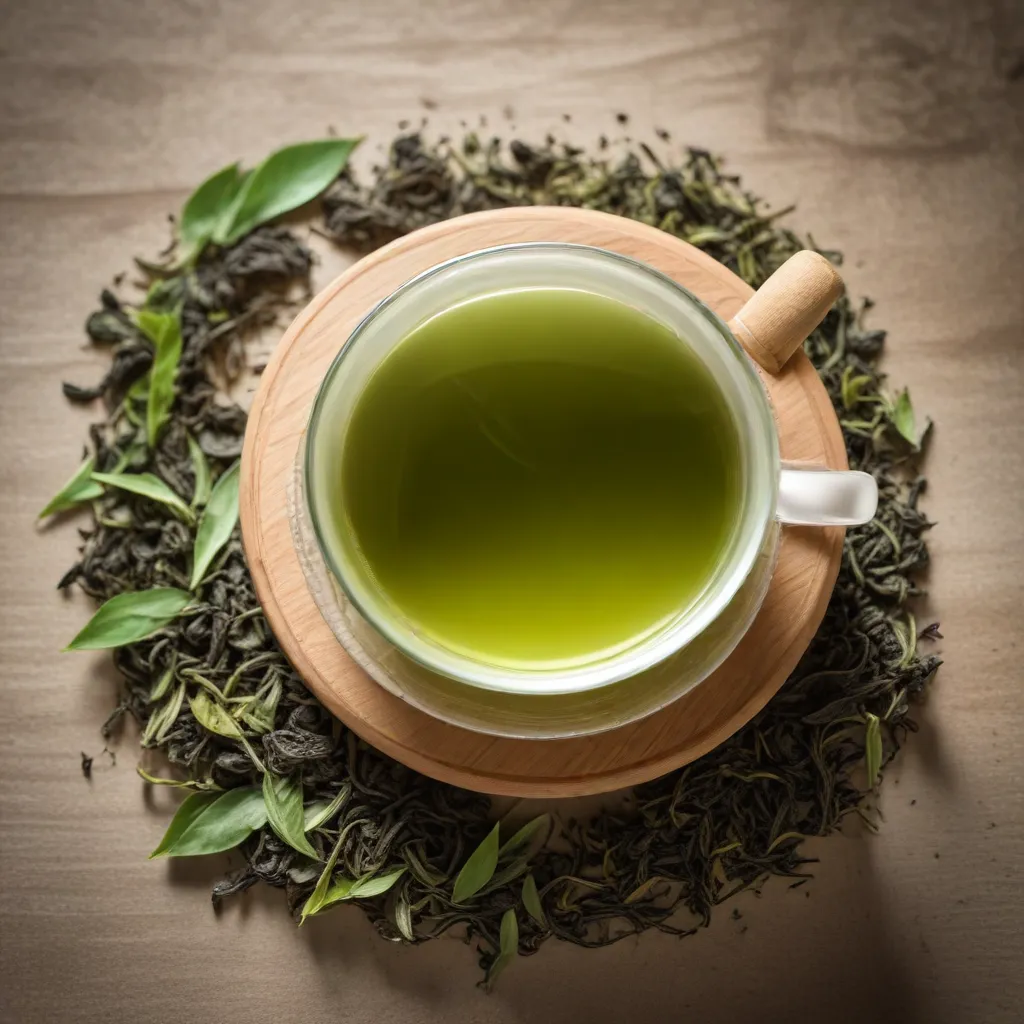
Types of Green Tea
Green tea is a versatile and ancient beverage that has gained widespread popularity around the world. Originating in China, green tea has become closely associated with many cultures throughout Asia, each developing their own unique varieties and traditions.
Matcha Green Tea
One of the most renowned forms of green tea is Matcha, a fine powdered green tea that is traditionally used in the Japanese tea ceremony. Matcha is grown in the shade, which enhances the production of chlorophyll and amino acids, giving it a vibrant green color and a sweet, umami-rich flavor. The tea leaves are carefully stone-ground into a fine powder, which is then whisked with hot water to produce a frothy, intense elixir. Matcha is prized not only for its exquisite taste, but also for its concentration of beneficial compounds like EGCG (epigallocatechin gallate), a potent antioxidant.
Sencha Green Tea
Another celebrated Japanese green tea is Sencha, the most widely consumed tea in the country. Sencha leaves are steamed soon after harvesting to prevent oxidation, preserving their vibrant green color and delicate, grassy flavors. The leaves are then rolled and shaped, yielding a tea with a smooth, refreshing taste and a subtle sweetness. Sencha is often enjoyed as a daily beverage, but higher-quality variations like Gyokuro, which are grown in the shade, offer a more complex and umami-forward profile.
Gyokuro Green Tea
Gyokuro is considered the pinnacle of Japanese green teas, prized for its exceptional flavor and aroma. The plants are shaded for several weeks before harvest, which increases the production of amino acids like L-theanine and boosts the tea’s umami characteristics. Gyokuro has a rich, savory taste with notes of seaweed and a lingering sweetness. This tea is typically brewed at lower temperatures and for longer durations to extract its full depth of flavor.
Health Benefits of Green Tea
Green tea has long been revered for its impressive array of health benefits, many of which can be attributed to its high concentration of polyphenol antioxidants.
Antioxidant Properties
The polyphenols found in green tea, particularly the catechins like EGCG, are potent antioxidants that can help neutralize harmful free radicals and reduce oxidative stress in the body. This may contribute to a lower risk of certain cancers, cardiovascular disease, and other age-related conditions.
Improved Brain Function
Green tea contains caffeine, which can enhance cognitive performance and alertness. But it also contains L-theanine, an amino acid that has been shown to promote relaxation and improve focus and concentration. The combined effects of caffeine and L-theanine may lead to enhanced brain function and neuroprotective benefits.
Cancer Risk Reduction
Numerous studies have suggested that regular green tea consumption may be associated with a reduced risk of various types of cancer, including breast, prostate, and colorectal cancer. The antioxidant and anti-inflammatory properties of green tea’s polyphenols are thought to play a key role in this potential cancer-preventive effect.
Cultivation and Processing
Green tea’s unique characteristics are the result of the careful cultivation and processing techniques used to produce it.
Growing Conditions
Green tea plants (Camellia sinensis) thrive in specific growing conditions, often found in the mountainous regions of East Asia. The tea bushes are typically grown in the shade or under specialized cover crops, which enhances the production of chlorophyll and amino acids. Careful pruning and harvesting techniques, often done by hand, ensure the leaves retain their optimal flavor and nutrient profile.
Harvesting and Steaming
The most prized green teas are harvested in the early spring, when the young, tender leaves are at their peak. These “first flush” leaves are quickly steamed or pan-fired to halt enzymatic oxidation, preserving the vibrant green color and delicate flavors. This crucial step differentiates green tea from other tea types, which undergo more extensive oxidation and fermentation processes.
Drying and Rolling
After the steaming or pan-firing step, the leaves are gently dried and then rolled or shaped to further develop their unique textures and aromas. The degree of rolling and the specific methods used can vary greatly between different green tea varieties, contributing to the diverse range of flavors and appearances.
Cultural Aspects of Green Tea
Green tea has been an integral part of many Asian cultures for centuries, deeply woven into traditions, rituals, and daily life.
History and Origins
The origins of green tea can be traced back over 4,000 years to ancient China, where it was first cultivated and used as both a beverage and a medicinal herb. The classic treatise “The Classic of Tea,” written by Lu Yu during the Tang Dynasty, is considered one of the most important historical texts on green tea and its preparation.
Ceremonial Traditions
In Japan, the preparation and consumption of green tea, particularly Matcha, is a central part of the renowned tea ceremony (chanoyu). This elaborate ritual involves the meticulous preparation and presentation of the tea, as well as the appreciation of the tea’s aroma, flavor, and the overall ambiance of the experience.
Global Popularity
While green tea has long been the predominant tea type in Asia, it has gained increasing popularity worldwide in recent decades. As consumers have become more health-conscious, the versatility and purported health benefits of green tea have made it a beloved beverage across the globe. Today, green tea can be found in a wide range of products, from bottled drinks to ice creams and baked goods, showcasing its adaptability and enduring appeal.
Discover the rich world of green tea and its myriad health and cultural benefits at Wine Garden Inn, where we are passionate about curating the finest teas and pairing them with our gourmet cuisine.
